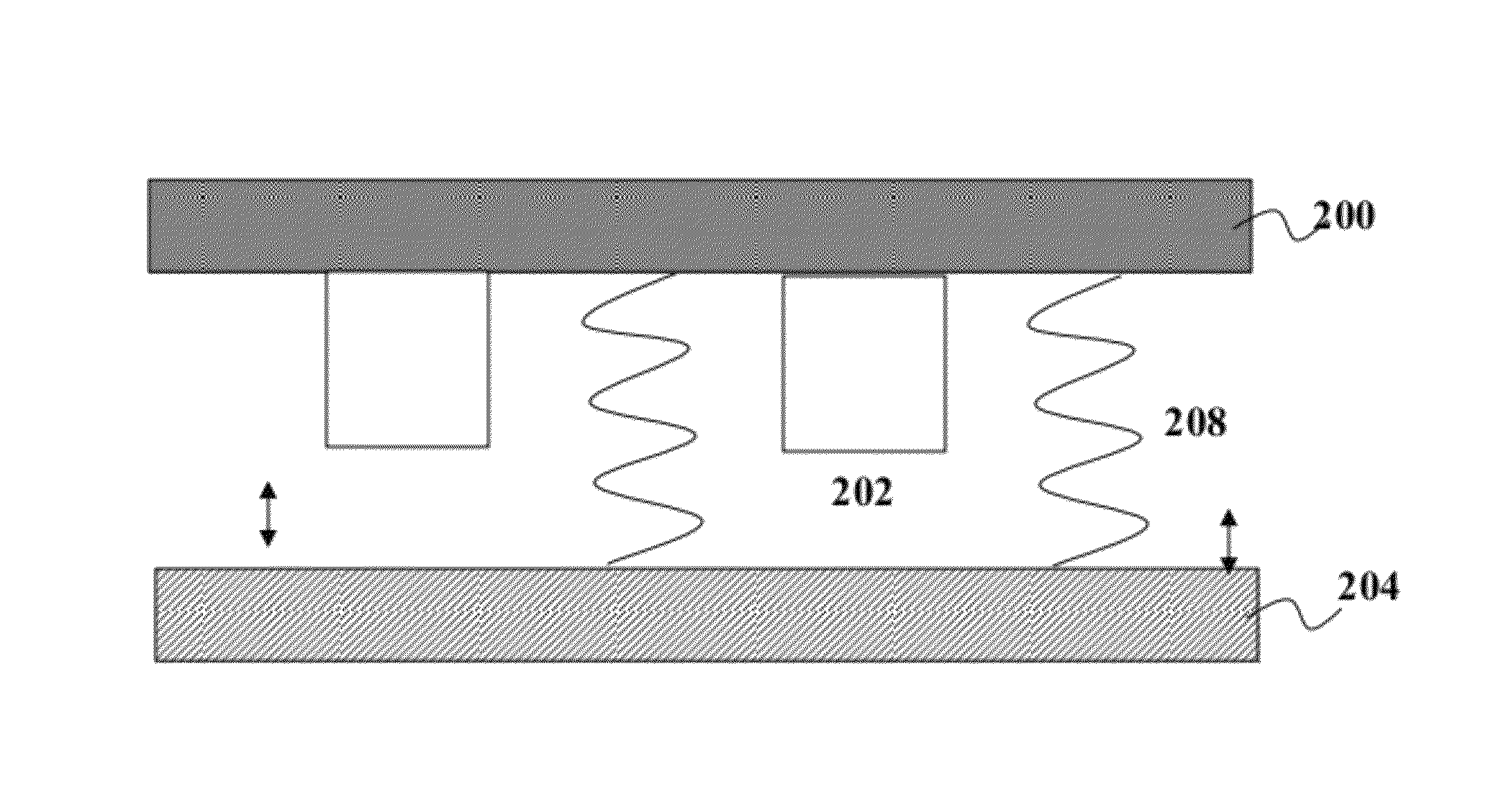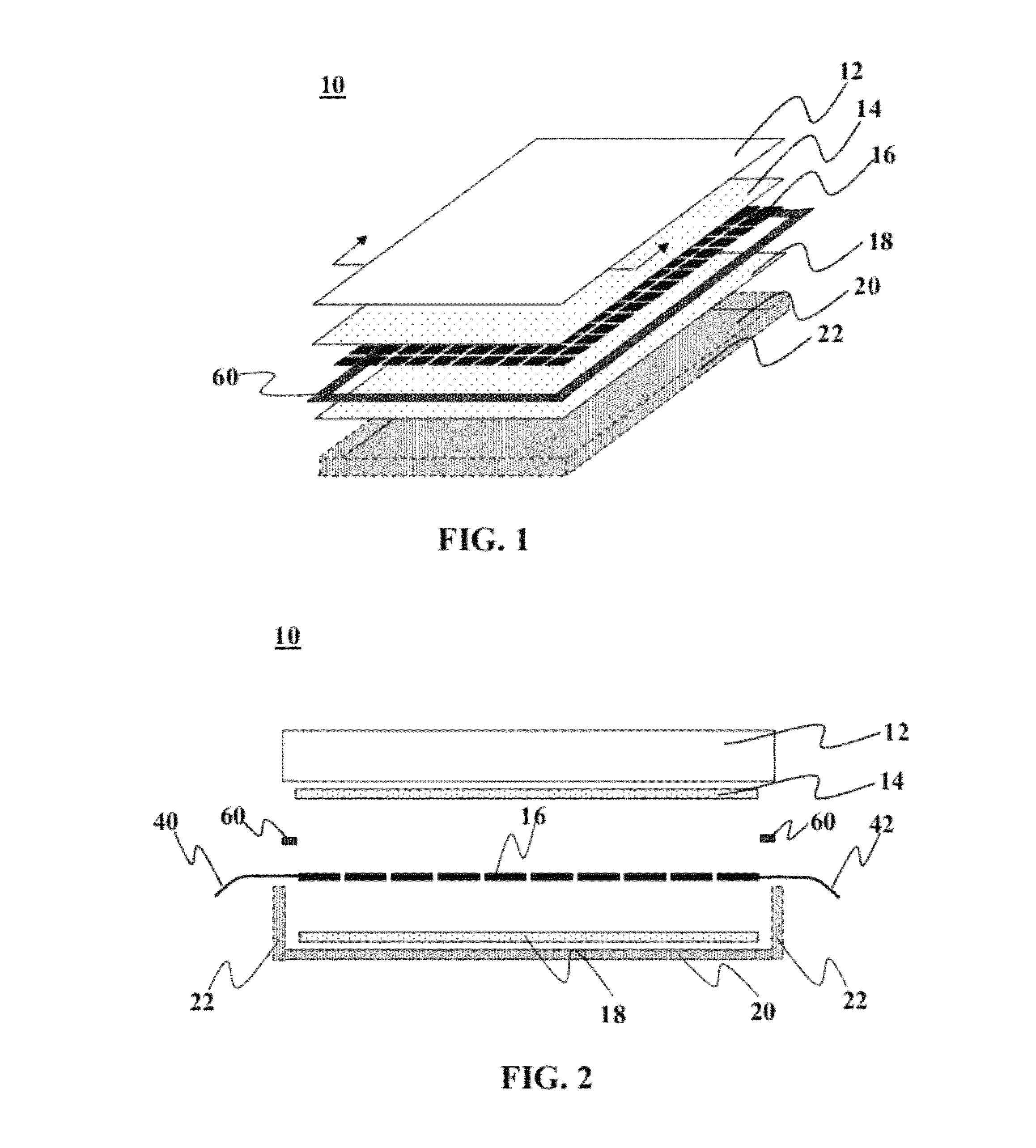Thermoelectric stack coating for improved solar panel function
a technology of solar panels and stacks, applied in the direction of generators/motors, pv power plants, semiconductor devices, etc., can solve the problem of unable to effectively harness this potential energy generation technique, and the challenge remains
- Summary
- Abstract
- Description
- Claims
- Application Information
AI Technical Summary
Benefits of technology
Problems solved by technology
Method used
Image
Examples
embodiment (
Embodiment(s) of the Invention
[0029]One approach to enabling this invention is to (1) create a solar panel whose form factor is comprised of a glass-foil laminate and whose foil back in comprised of Al foil. (2) Placement and / or deposition of a hard ferromagnetic material onto the Al foil. Such a material could be comprised of 1-10 mm of neodymium iron boron (NdFeB). (3) Placement and / or deposition of an elastic, heat conducting material onto the hard magnetic surface. Examples of such material include but are not limited to conductive polymer (e.g., CoolPoly® thermally conductive plastics, PolyOne Therma-Tech thermally conductive plastics, nylon 6-6, filled nylon 6-6, and / or a polyphenylene sulfide, optionally mixed with one or more thermally conductive fillers such as metal, ceramic, graphite, nanotubes, etc.). The material may also incorporate for example, Nylon 1020, Nylon 1040, Nylon 1240, Froton 6165A, Froton 6165D, or polyphenylene sulfide, or any other polymer. The spring co...
PUM
 Login to View More
Login to View More Abstract
Description
Claims
Application Information
 Login to View More
Login to View More - R&D
- Intellectual Property
- Life Sciences
- Materials
- Tech Scout
- Unparalleled Data Quality
- Higher Quality Content
- 60% Fewer Hallucinations
Browse by: Latest US Patents, China's latest patents, Technical Efficacy Thesaurus, Application Domain, Technology Topic, Popular Technical Reports.
© 2025 PatSnap. All rights reserved.Legal|Privacy policy|Modern Slavery Act Transparency Statement|Sitemap|About US| Contact US: help@patsnap.com



